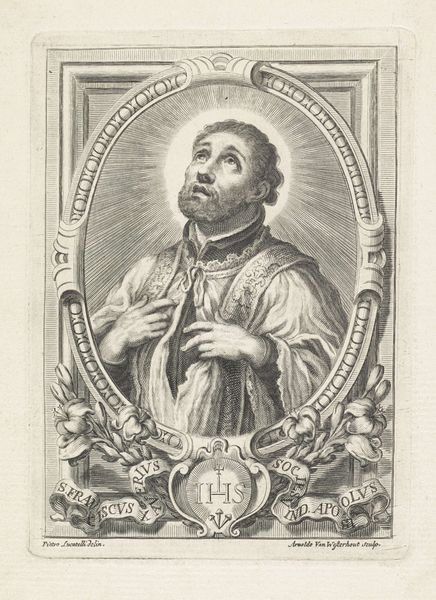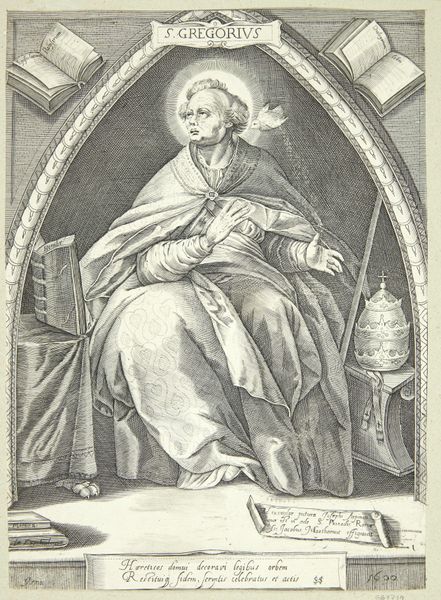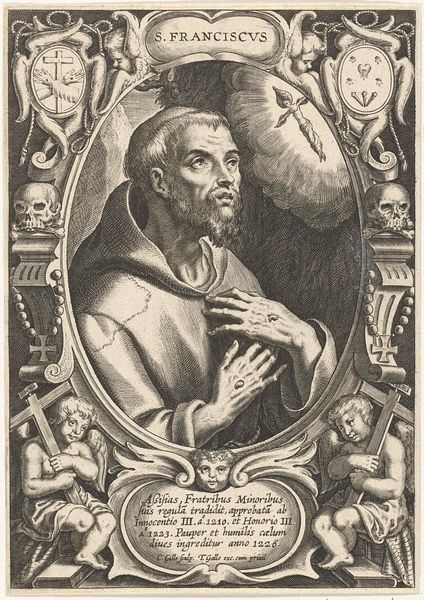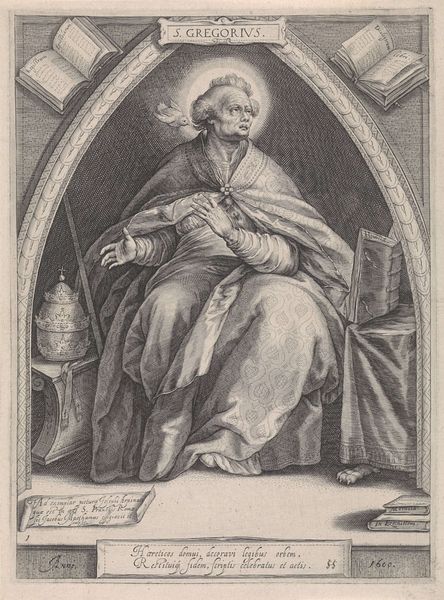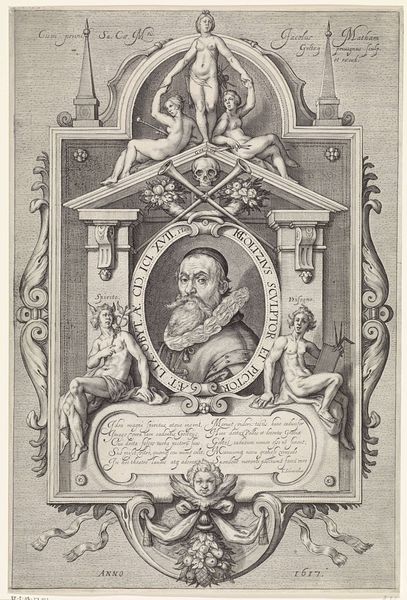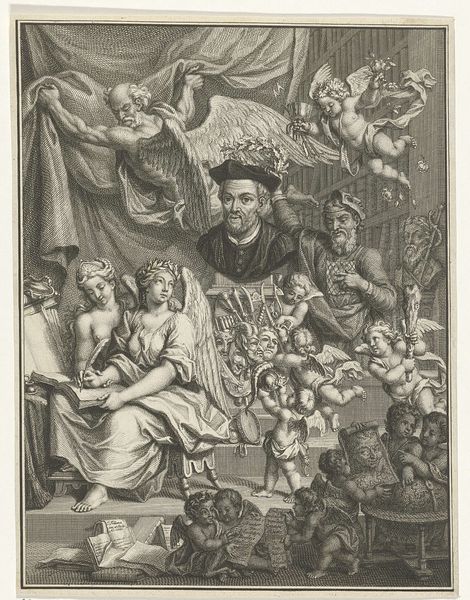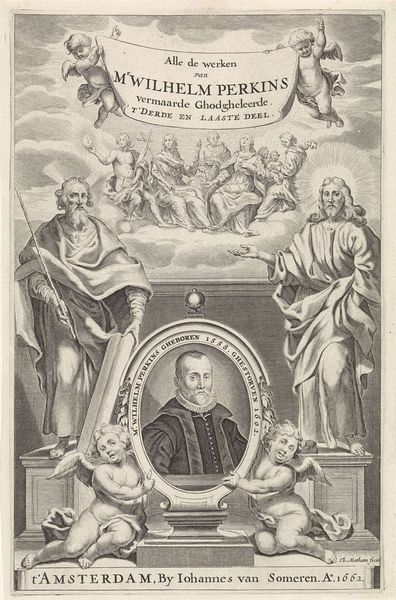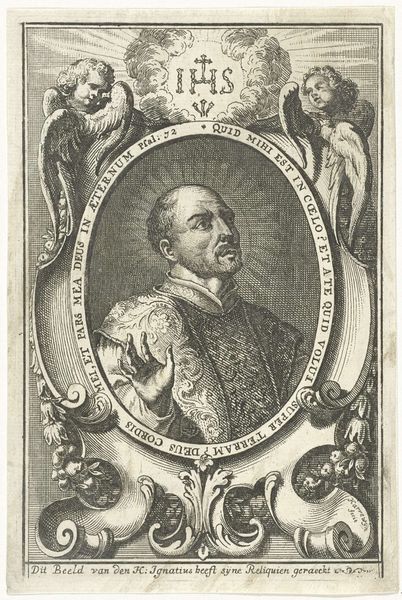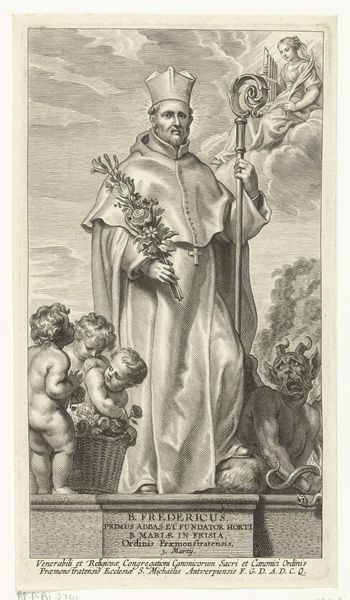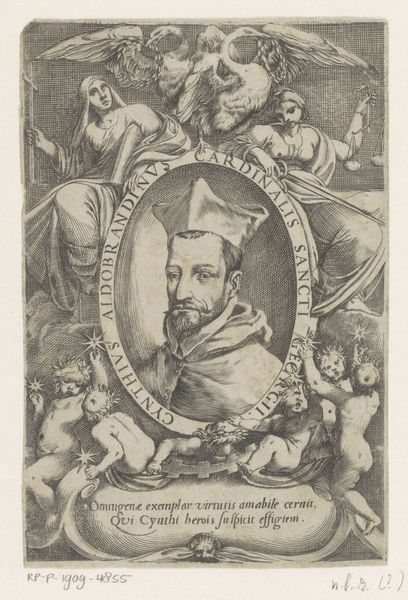
engraving
#
portrait
#
baroque
#
old engraving style
#
caricature
#
history-painting
#
engraving
Dimensions: height 207 mm, width 157 mm
Copyright: Rijks Museum: Open Domain
Curator: This engraving from 1668 by Cornelis Bloemaert, currently residing in the Rijksmuseum, presents Saint Thomas Aquinas in a rather pensive mood. My initial read on this is contemplative, even ethereal—that stark contrast between the sharp engraving lines and the soft expressions. Editor: My immediate impression is one of labor – the intensive craft involved in producing such detailed lines by hand. Looking closer at this process gives us some appreciation of the kind of labor it involves. Look at all the materials! Curator: Absolutely. There's this beautiful, almost contradictory blend here—the very earthly medium of engraving being used to depict something so otherworldly. I'm especially drawn to the way the light radiates from him. It's not just illumination; it feels like an outpouring of wisdom. I am curious how someone arrives at such an otherworldly space by using such earth-bound media. Editor: It’s really clever when you consider how the engraving style imitates something almost like the medieval scholastic writing of Thomas. Every mark must be planned. The pressure on the plate, each stroke determining how that ink distributes…I guess you can say that both artist and the saint are laboring through different kinds of writing and thinking. And this labour—like scholastic arguments—gives this print an appealing, clear-cut quality. Curator: I completely see your point about the process mimicking Thomas’ meticulous thought! And I love the cheeky addition of the putti playing around his portrait, almost too blissfully ignorant of the worldy problems on Saint Thomas' mind. Editor: You see them as blissfully ignorant. I tend to see the putti differently, especially within their picture frame—those images or tropes of babies and children became luxury items around this period as print and book production made this possible on an unprecedented scale. The cute becomes co-opted, doesn’t it? And yet it does have a nice clarity. It leaves one pondering on all of these strange conditions of labour and production, doesn’t it? Curator: Indeed, seeing through a materialist lens truly gives us new pathways for interpretations that might otherwise be unseen. I now feel I see something new about this piece. Thanks! Editor: And I agree - seeing how different people imagine this saint shows how slippery any reading or method can become...a blessing or a curse!
Comments
No comments
Be the first to comment and join the conversation on the ultimate creative platform.

